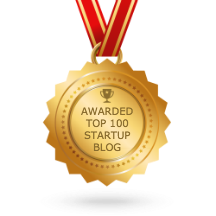Cold emailing is a powerful tool for businesses, freelancers, and job seekers to connect with potential clients, employers, or partners. Unlike warm emails, which are sent to people with prior contact or relationship, cold emails are sent to individuals or organizations who may not know you. If done correctly, cold emailing can open doors to opportunities you never thought possible. In this guide, we’ll explore what cold emailing is, its benefits, best practices, and how to craft an effective cold email.
What is Cold Emailing?
Cold emailing refers to the act of sending unsolicited emails to individuals or businesses without prior communication. It’s a direct approach used to initiate conversations, whether it’s to pitch a product, request a meeting, or introduce a service. Despite being unsolicited, a well-crafted cold email can feel personal, relevant, and engaging to the recipient.
Why is Cold Emailing Important?
Cold emailing is an essential strategy in today’s digital world. Here are some reasons why:
- Cost-Effective: Cold emailing doesn’t require a significant budget compared to traditional advertising or cold calling.
- Scalable: You can send multiple emails to different prospects at the same time.
- Measurable: With tools like email trackers, you can measure open rates, click-through rates, and responses to optimize your campaigns.
- Direct and Personal: Unlike social media ads, cold emails land directly in someone’s inbox, making it a personal mode of communication.
How to Write an Effective Cold Email
A successful cold email should be concise, engaging, and tailored to the recipient. Here are steps to craft a compelling cold email:
- Research Your Target Audience Before sending a cold email, understand who your audience is. Research their needs, interests, and challenges. This information will help you create a personalized email that resonates with them.
- Craft a Strong Subject Line The subject line is the first thing your recipient sees. It should be intriguing yet clear enough to entice them to open the email. For instance, “Website Instructions Reminder” could work well if the email relates to providing helpful instructions for their website.
- Start with a Personalized Greeting Address the recipient by name and include something specific about them or their company. For example:“Hi [Recipient’s Name], I came across your work on [specific project or platform] and was impressed by [specific detail].”
- Introduce Yourself and State Your Purpose Be clear about who you are and why you’re reaching out. Avoid lengthy introductions; get straight to the point. For example: “I’m [Your Name], a digital marketing expert helping businesses like yours increase online visibility. I wanted to share a quick idea to boost your website traffic.”
- Provide Value Explain how your product, service, or idea can solve their problem or benefit them. Tailor this section to their specific needs: “By implementing [specific strategy], you can see a [specific result], as demonstrated in our work with [specific example].”
- Include a Call-to-Action (CTA) End your email with a clear and actionable request. For instance: “Would you be available for a quick call this week? Click here to schedule a time that works for you.”
Best Practices for Cold Emailing
- Keep it Short and Simple People are busy, so keep your email concise and to the point. Aim for no more than 150-200 words.
- Avoid Spammy Language Words like “free,” “urgent,” or excessive exclamation marks can trigger spam filters. Keep your language professional.
- Proofread Before Sending Typos and grammatical errors can make you appear unprofessional. Always proofread your email before hitting send.
- Follow Up If you don’t receive a response, send a polite follow-up email. Often, recipients need a gentle nudge.
- Comply with Email Laws Make sure your email complies with laws like GDPR and CAN-SPAM. Always include an option for recipients to opt-out of future emails.
Tools to Enhance Your Cold Emailing Campaigns
- Email Finder Tools: Tools like Hunter.io can help you find accurate email addresses of your prospects.
- Email Tracking Software: Platforms like Yesware or Mailtrack let you track when your emails are opened and links are clicked.
- Automation Tools: Services like Mailshake or Outreach.io allow you to scale your campaigns efficiently.
Examples of Cold Emails
- Job Seeking Cold Email “Hi [Hiring Manager’s Name],I’m [Your Name], a [Your Profession] with [specific skills or experience]. I admire the work your team has done on [specific project] and would love the opportunity to contribute to [specific goal]. Let me know if you’re available for a brief chat. Click here to view my portfolio.Best regards, [Your Name]”
- Sales Cold Email “Hi [Recipient’s Name],I noticed your company is growing rapidly in [specific area]. At [Your Company], we specialize in [specific solution] to help businesses like yours [specific benefit]. Would you be open to a quick call to discuss how we can help? Click here to pick a time.Best, [Your Name]”
Common Mistakes to Avoid in Cold Emailing
- Lack of Personalization: Generic emails often end up in the trash. Tailor each email to the recipient.
- Overloading with Information: Too much information can overwhelm the recipient. Stick to one or two key points.
- No Clear CTA: Without a clear action for the recipient to take, your email may go unanswered.
Final Thoughts
Cold emailing, when done right, can be a game-changer for your outreach efforts. It’s not about spamming inboxes; it’s about providing value and building genuine connections. Remember to research your audience, personalize your message, and include a clear CTA. With practice and the right tools, cold emailing can become a highly effective part of your communication strategy.
So next time you’re thinking about reaching out to someone new, consider the power of cold emailing. Whether it’s to share a website instructions reminder or introduce your innovative ideas, the right email can make all the difference. Start crafting your emails today, and click here to learn more about refining your outreach techniques!










